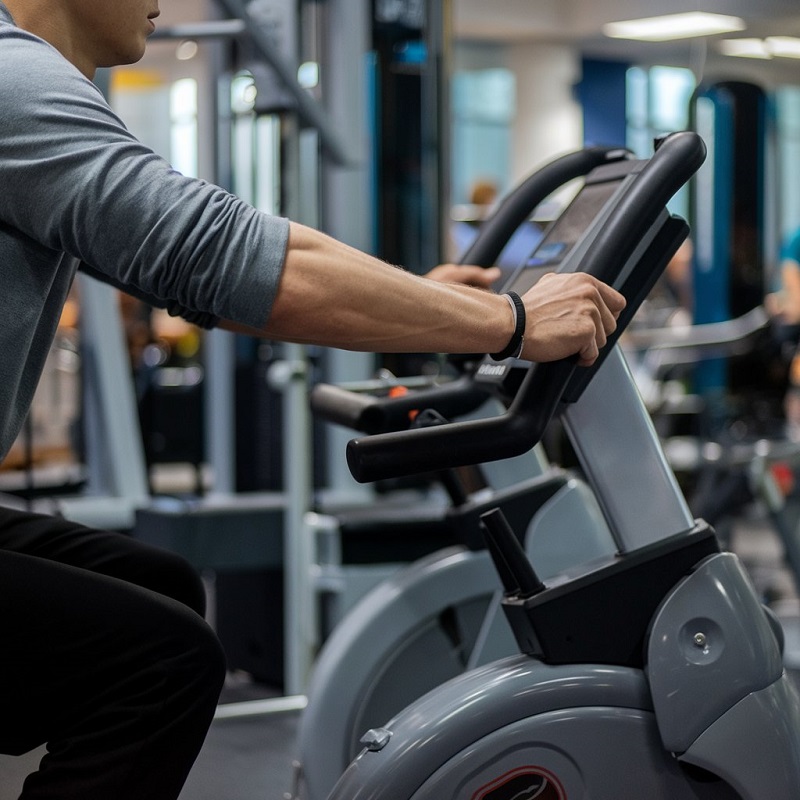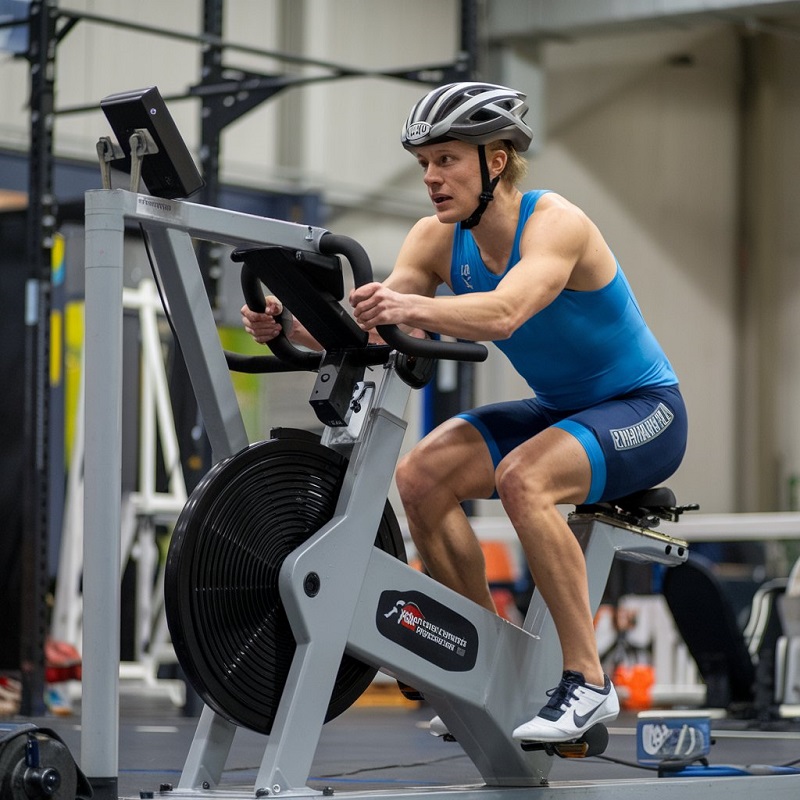What Is Erging and Why It’s the Ultimate Full-Body Workout
If you’re serious about getting fit, shedding pounds, or building full-body strength, you’ve probably come across erging. But here’s the kicker: most people who hop on a rowing machine have no clue how many calories they’re actually burning.
That’s where the ERG calculator comes in—a game-changing tool that takes the guesswork out of your workouts and helps you train with precision. Whether you’re a seasoned rower or just getting started, this free tool can help you unlock serious performance gains.
What Does Erging Mean? (Definition + Benefits)
In the fitness world, erging means using an ergometer—better known as a rowing machine. It mimics rowing on water, offering a powerful combination of cardio, strength, and endurance in a single movement.
Top benefits of erging:
- Activates 86% of your muscles
- Burns calories faster than most machines
- Strengthens your core and improves posture
- Low-impact and joint-friendly
- Boosts cardiovascular and mental stamina
From gym-goers to Olympic rowers, erging is a favorite for a reason.
How Erging Compares to Other Cardio Machines
Wondering how erging stacks up against running, cycling, or the elliptical? Here’s the breakdown:
| Workout Type | Muscles Worked | Impact Level | Calorie Burn (30 min) | Full Body? |
| Erging | Legs, core, back, arms | Low | 250–400+ kcal | ✅ Yes |
| Treadmill Running | Legs, core | High | 240–450 kcal | ❌ No |
| Cycling | Legs | Low | 200–400 kcal | ❌ No |
| Elliptical | Legs, arms (light) | Low | 200–350 kcal | ⚠️ Partial |
Why erging wins: Full-body burn, more calorie bang per stroke, and lower injury risk.
Erging for Beginners: How to Get Started the Right Way
Just getting started with erging? Here’s how to keep it smooth and stress-free.
✅ Beginner Tips for Erging:
- Adjust the foot straps and damper setting
- Focus on proper form: legs → lean back → pull with arms
- Start with short sessions (10–15 min)
Sample Beginner Routine:
- 2 min warm-up (slow, easy strokes)
- 5 min steady pace
- 2 min intervals (20s fast, 40s slow)
- 1 min cooldown
Stay consistent, and results will come.
What Is an ERG Calculator and How Does It Work?
The ERG calculator is a free tool that estimates your caloric burn during erging based on personal metrics. It uses the scientifically proven Mifflin-St Jeor equation to estimate your daily energy output.
Inputs You Provide:
- Age
- Gender
- Weight
- Height
- Activity level
Output You Get:
- Estimated daily calorie burn
- Personalized training insights
- Smart data to adjust your rowing workouts
How to Use the ERG Calculator (Step-by-Step)
Using the calculator is fast and easy:
- Enter your age
- Select your gender
- Input your weight and height
- Choose your activity level
- Click “Calculate”
✅ Try the ERG Calculator Now — It’s free and requires no login.
ERG Calculator
Formula for ERG Calculator (Mifflin-St Jeor)
For Men:
BMR = ( 10×weight) + ( 6.25×height) −( 5×age) + 5
For Women:
BMR = ( 10×weight) +( 6.25×height) − ( 5×age) − 161
Then:
TDEE = BMR × ActivityFactor
Multiply by Activity Level (TDEE)
Once BMR is calculated, multiply it by an Activity Factor based on how intense your daily movement or erging is:
| Activity Level | Description | Factor |
|---|---|---|
| Sedentary | Little to no exercise | 1.2 |
| Lightly active | Light exercise 1–3 days/week | 1.375 |
| Moderately active | Moderate exercise 3–5 days/week | 1.55 |
| Very active | Hard exercise 6–7 days/week | 1.725 |
| Super active | Very intense exercise or physical job | 1.9 |
Example:
A 30-year-old woman weighing 65 kg and 165 cm tall who is moderately active:
Step 1:
BMR = (10 × 65) + (6.25 × 165) − (5 × 30) − 161
BMR = 650 + 1031.25 − 150 − 161 = 1370.25 kcal
Step 2:
TDEE = 1370.25 × 1.55 = ~2,124 kcal/day
This is her estimated energy expenditure — and what the ERG calculator automatically gives.
Sample Results from the ERG Calculator
To give you an idea, here are calorie estimates for common user profiles:
| Profile | Age | Weight (kg) | Height (cm) | Activity Level | Estimated Calories Burned |
| Young Male Athlete | 25 | 75 | 180 | Very Active (1.725) | 2,958 kcal/day |
| Middle-aged Female | 40 | 65 | 165 | Lightly Active | 1,915 kcal/day |
| Senior Beginner | 60 | 70 | 170 | Sedentary (1.2) | 1,548 kcal/day |
Use this data to refine your fitness goals and track your daily progress.
Advanced Erging: Take Your Training to the Next Level
If you’ve got the basics down, it’s time to go elite.
Best Advanced Erging Techniques:
- 6x500m sprints with 1-minute rest
- Use higher damper settings for strength
- Monitor stroke rate (20–30 SPM) for consistency
Many experienced rowers compete in:
- Concept2 Global Challenges
- CrossFit WODs
- Indoor rowing competitions
Pair your training with the ERG calculator to dial in your calories and recovery needs.
Best Rowing Machines for Erging at Home
If you’re hooked on erging, consider bringing the workout home. Here’s a quick buying guide:
| Machine | Price | Key Features | Ideal For |
| Concept2 RowErg | $1,000+ | Reliable, gym-grade, strong community | All users |
| Hydrow Smart Rower | $2,000+ | Built-in workouts, scenic videos | Beginners & tech fans |
| NordicTrack RW900 | $1,500+ | Interactive touchscreen, silent drive | Home gym lovers |
| Sunny Health SF-RW5515 | <$400 | Budget-friendly, basic but solid feel | Starters & tight budgets |
Common Mistakes to Avoid When Erging
Don’t pull with your arms first – Legs should lead the movement
Avoid slouching – Keep your back upright and core tight
Don’t rush strokes – Aim for consistency, not chaos
No warm-up? Big mistake – Spend 2–3 mins prepping your body
Skipping tracking – Use the ERG calculator to monitor effort
Fixing these mistakes can help prevent injury and unlock smoother sessions.
How the ERG Calculator Helps You Make Progress
The ERG calculator isn’t just a numbers tool—it’s a performance booster.
✅ Tracks real energy output
✅ Makes workouts more intentional
✅ Helps you eat, train, and recover smarter
✅ Keeps motivation high with measurable data
It’s the difference between guessing and growing.
What Others Say About the ERG Calculator
“Before the calculator, I had no idea if I was making progress. Now I know exactly how much I burn and how to push harder.”
— Janelle, NYC
“Erging is my go-to workout. The calculator keeps me on track—especially during cutting season.”
— Marcus, Toronto
FAQs: Erging & the ERG Calculator
Q: Is erging better than running?
A: Erging works more muscles and is easier on the joints. Great for full-body training.
Q: How often should I erg per week?
A: Beginners can start with 3x a week. Advanced rowers might do 4–6 sessions.
Q: Is the ERG calculator accurate?
A: Yes, it uses one of the most reliable equations (Mifflin-St Jeor) for calorie estimates.
Q: Can I use the calculator on mobile?
A: Yes! It’s responsive and works on all devices.
Q: Do I need to download anything?
A: Nope—it’s 100% online and free.
Conclusion: Use the ERG Calculator to Make Every Stroke Count
Erging is an elite-level workout that anyone can do. With the ERG calculator, you finally have a way to turn raw effort into real, trackable progress.
Ready to take control of your training?
Use the ERG calculator now and take your erging to the next level.




